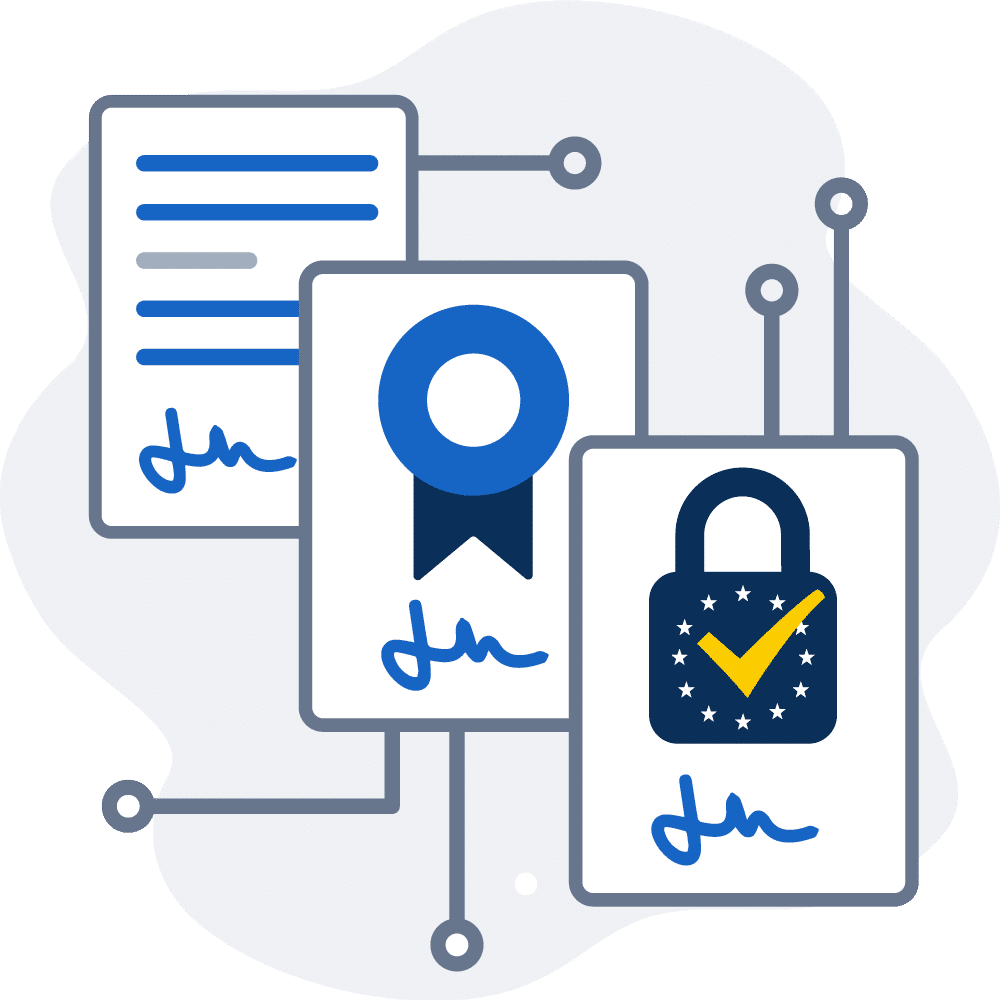Legally binding electronic signature
eIDAS defines three forms of electronic signature
The eIDAS Regulation (EU) No. 910/2014, which has been in force since 2016, contains binding regulations for electronic identification and trust services throughout Europe. This also includes the topic of electronic signatures. Since it came into force, it has been possible to conclude contracts digitally and in a legally binding manner across countries. The eIDAS Regulation distinguishes between three types of electronic signature – the simple, advanced and qualified electronic signature.
Good to know: In practice, the advanced electronic signature is by far the most widely used form. The reasons are obvious: it is easy to implement and is evidence-proof. The qualified electronic signature is used less frequently because it also requires the certificate of a certification provider.
SES
The simple electronic signature consists of data in electronic form that is attached to or logically connected with other electronic data. The signer uses this to sign. This can be, for example, a scanned signature with name in a document. Normally, the probative value of the SES is rather low. For this reason, it is used by companies primarily in the context of internal communication.
AES
The advanced electronic signature offers a very high evidentiary value, as it ensures that the document cannot be changed undetected after it has been signed. The signature can be uniquely assigned to the signer and uniquely identifies the signer. When the signature is created, it is ensured that the signature creation data is under the control of the signer.
As a result, AES is the most widely used signature form in the business environment.
QES
The qualified electronic signature also requires the signatory to be identified by a trust service provider using, for example, a video identification process.
The QES is only required if national legislation makes it mandatory for certain processes (e.g., in Germany if the written form is required). The QES offers the highest level of legal certainty.


